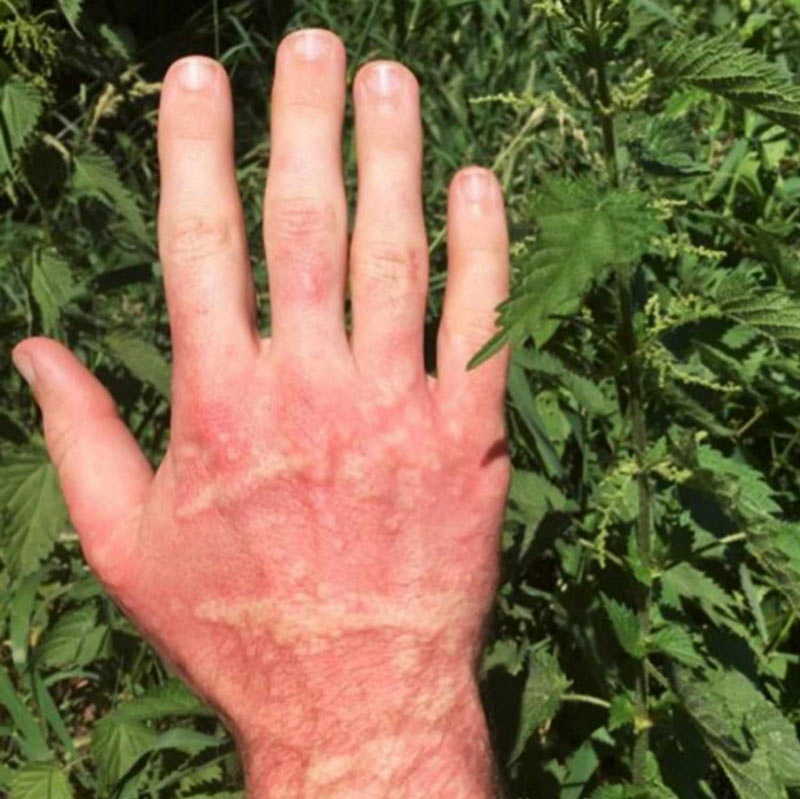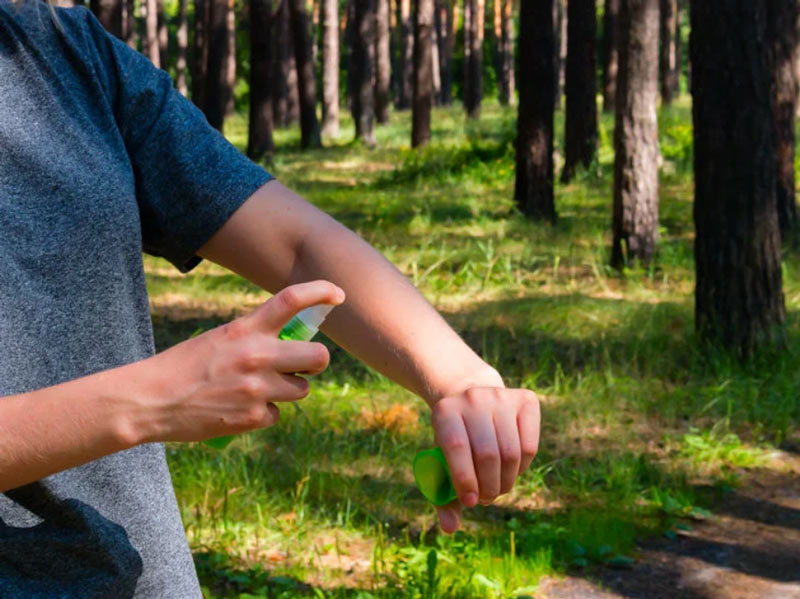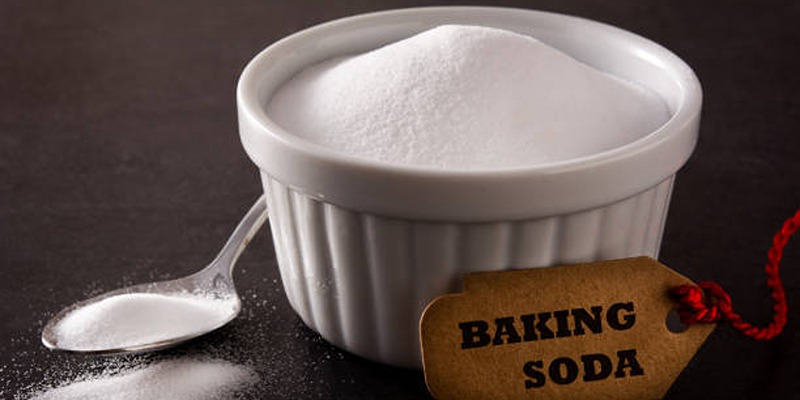If you've ever encountered stinging nettle, you know how uncomfortable and unpleasant its effects can be! An irritating rash can develop after contact with the plant's prickly leaves or stems.
While annoying, this type of rash is generally mild and usually doesn't require medical attention. But that doesn't mean it should be left untreated; if managed properly a stinging nettle reaction can quickly become a thing of the past.
With that in mind, let's look at some effective methods for relieving stinging nettle rashes so that you can quickly get back to enjoying your outdoor activities without worry!
Symptoms of Stinging Nettle Rash

Stinging nettle rash, also known as urticaria, is an allergic reaction when the skin comes into contact with stinging nettle plants. The symptoms of stinging nettle rash can vary in severity and may include:
- Itchy skin: The most common symptom of stinging nettle rash is intense itching in the affected area. The itching can be quite severe and may worsen with scratching.
- Redness: The skin in the affected area may become red and inflamed. This redness is often accompanied by raised welts or hives.
- Hives: Raised, itchy welts or hives are a characteristic symptom of stinging nettle rash. These welts can vary in size and may merge to form larger raised skin patches.
- Burning or stinging sensation: Some people may experience a burning or stinging sensation in the affected area, which can add to the discomfort.
- Swelling: Swelling, known as angioedema, can occur in the deeper layers of the skin. It typically affects the face, lips, eyelids, and other areas around the eyes. In severe cases, swelling can also occur in the throat, leading to breathing difficulties.
- Blistering: In more severe cases, blisters may develop on the skin, particularly if the rash is not treated or if there is repeated exposure to stinging nettle plants.
- Secondary symptoms: Some individuals may experience additional symptoms, such as fatigue, headache, dizziness, or a general feeling of being unwell.
Self-Care for Nettle Stings

If you've been stung by stinging nettle and are experiencing discomfort, you can take several self-care measures to alleviate the symptoms. Here are some tips:
Remove the nettle hairs.
The stinging sensation is caused by tiny hairs on the nettle plant that release irritating chemicals when they come into contact with the skin. Use a pair of tweezers or adhesive tape to gently remove any nettle hairs embedded in your skin.
Wash the affected area.
Thoroughly wash the area with soap and water to remove any remaining irritants. This can help reduce itching and irritation.
Apply a cold compress.
Apply an ice pack or cold compress wrapped in a small cloth to the injured region. The area's swelling and irritation may be lessened as a result of the chilly temperature.
Take over-the-counter antihistamines
Non-prescription antihistamines, such as diphenhydramine (Benadryl), can help relieve itching and reduce allergic reactions. Follow the dosage instructions on the package or consult a pharmacist.
Use topical creams or lotions.
Calamine lotions or over-the-counter hydrocortisone creams can temporarily reduce inflammation and itching. As instructed on the packaging, apply them.
Avoid scratching
Although difficult, resist the urge to scratch the affected area. Scratching can further irritate the skin and prolong the healing process.
Wear protective clothing
When spending time in areas where stinging nettle is present, wear long-sleeved shirts, long pants, and gloves to minimize skin exposure and reduce the risk of stings.
Monitor for severe reactions.
If you experience symptoms such as difficulty breathing, facial swelling, or widespread rash, seek immediate medical attention. These could be signs of a severe allergic reaction that requires prompt medical intervention.
When to see a doctor
In most cases, stinging nettle stings can be treated at home with simple remedies and self-care measures. However, there are certain situations where it is recommended to see a doctor for nettle stings:
Severe allergic reaction
If you experience symptoms of a severe allergic reaction, such as difficulty breathing, chest tightness, face, lips, or throat swelling, or if you develop hives all over your body, seek immediate medical attention. These symptoms could indicate anaphylaxis, a potentially life-threatening condition.
Persistent or worsening symptoms
If your symptoms, such as itching, redness, or swelling, persist for more than a few days or worsen despite home treatments, it is advisable to consult a doctor. They can evaluate the rash and recommend appropriate treatment options.
Multiple or extensive stings
If you have been stung by many stinging nettle plants or the stings, cover a significant area of your body, seeking medical advice is a good idea. Excessive exposure to stinging nettle can lead to a more severe reaction and require medical intervention.
Presence of infection
If the stinging nettle stings become infected, characterized by increased pain, warmth, redness, swelling, or pus formation, it is important to see a doctor. They can assess the infection and prescribe appropriate antibiotics if necessary.
Known underlying health conditions
Suppose you have pre-existing medical conditions, such as asthma or other respiratory disorders, or a history of severe allergic reactions. In that case, it is recommended to consult a healthcare professional for guidance on managing nettle stings.
Medicine Precautions for Nettle Stings
- Aspirin or aspirin-containing products should be avoided for individuals 18 years or younger due to the risk of Reye's syndrome, a rare but serious illness affecting the liver and brain. It is generally recommended to use alternative pain relievers for this age group.
- If non-steroidal anti-inflammatory drugs (NSAIDs) alleviate pain or reduce inflammation caused by nettle stings, it is advisable to take them with food or milk. This helps prevent stomach irritation or discomfort.
- NSAIDs should be avoided in certain conditions, including:
- Individuals with a history of asthma triggered by NSAIDs should refrain from using these medications.
- Individuals with ulcer disease, bleeding disorders, or taking blood thinners (anticoagulants) should avoid NSAIDs as they can increase the risk of bleeding.
- If someone has a known allergy to NSAIDs, they should refrain from using these medications to prevent an allergic reaction.
FAQs
What is stinging nettle rash?
Stinging nettle rash, or urticaria, is a skin condition characterized by itchy and raised red welts that appear after contact with stinging nettle plants. The rash is caused by the release of histamine and other chemicals from the plant's tiny hairs that penetrate the skin.
How can I relieve the symptoms of stinging nettle rash?
There are several ways to alleviate the discomfort caused by stinging nettle rash. To soothe the affected area, apply over-the-counter anti-itch creams or ointments containing ingredients like hydrocortisone or calamine lotion. Taking oral antihistamines can also help reduce itching and inflammation. Additionally, cold compresses or oatmeal baths can provide temporary relief.
Are there any natural remedies to treat stinging nettle rash?
Yes, there are natural remedies that can help alleviate stinging nettle rash. Aloe vera gel, with its soothing properties, can be applied topically to reduce itching and inflammation. Cold green tea compresses or chamomile tea bags can also provide relief. Additionally, taking a lukewarm baking soda bath or applying a paste of baking soda and water to the affected area may help soothe the rash.
Conclusion
While stinging nettle rashes can be painful and uncomfortable, many self-care strategies can be used to reduce the symptoms. These treatments can help soothe and reduce the pain and irritation of nettle rashes, from over-the-counter topical medications to baking soda or oatmeal baths. However, if symptoms persist or get worse, it's important to see a healthcare professional for further advice. Before applying any medication to nettle rash, carefully read all label safety information.




